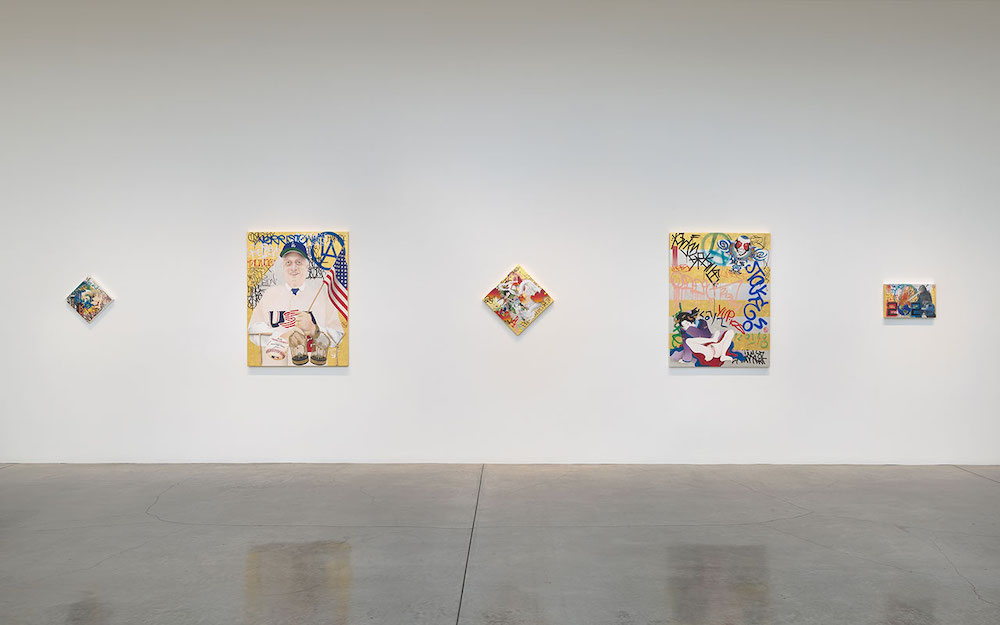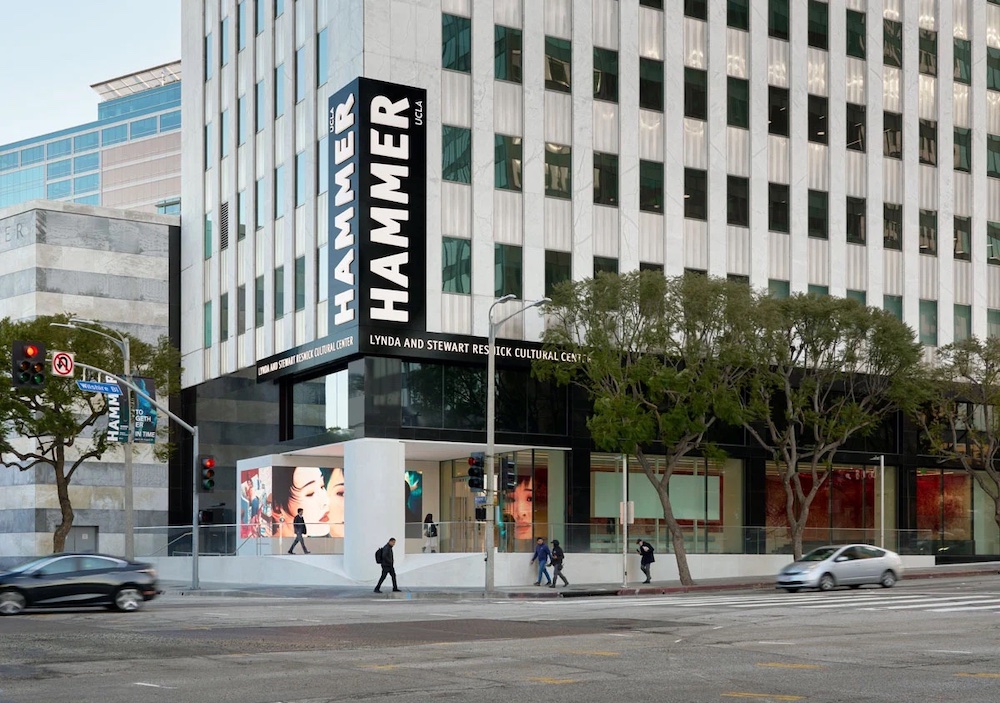Hammering is Done
The Hammer Museum has been transformed, and it’s happened so gradually over the past two decades that we barely noticed it. Sometimes one section would be closed off, sometimes another, and every so often a new section would be unveiled. There’s the bridge that crosses the central courtyard, the revived restaurant, the spiffy gift shop and last year the dedicated space for works on paper, which is a jewel box of a gallery—literally, a box within a box to look at smaller works in an intimate space. Right now it’s featuring a wonderful retrospective of Bridget Riley’s drawings.
On March 26, the Hammer opened its completely renovated home, with several new exhibitions thrown in. “We altered every square inch of this museum,” says Director Ann Philbin. Kudos to Philbin, who had the vision to remake this building and this museum, bringing an obscure university museum into citywide and nationwide prominence. She’s also had the determination to raise the money—and to see it all through.
The building has never felt more of a whole, and the beautifully spun web of red twine that engulfs the entrance is a sweeping welcome which was made by Japanese artist Chiharu Shiota, with the help from UCLA students. Altogether, 40,000 square feet of new space has been added, and the museum now spans the entire block along Wilshire Boulevard, with Michael Maltzan acting as the lead architect throughout.
There’s so much to say, but let’s take a look at the two corners on Wilshire. They’ve moved their main entrance to the corner of Westwood and Wilshire, although you have to approach it from the side, up a ramp from Wilshire and towards the corner. Meanwhile that corner has now become a small, raised platform to wait for your friends or take a moment to pause. It’s a great way to transition into the museum, and in a chat with Maltzan, I learned that they had that move in mind.
The other corner now has a small outdoor patio, currently occupied by Sanford Biggers’ gigantic and rather mysterious bronze sculpture, Oracle, based on an ancient statue of Zeus, but this one with an African American head. Inside is a new media installation, Particulates, a spectacular laser-light work by Rita McBride.

Desert X 2023 installation view, Lauren Bon, The Smallest Sea with the Largest Heart, photo by Lance Gerber, courtesy of the artist and Desert X.
Desert X
It’s been a particularly good year for Desert X in the Coachella Valley, with a new sensibility added by guest curator Diana Campbell. Campbell is the founding artistic director of the Samdani Art Foundation in Bangladesh and the chief curator of the Dhaka Art Summit. She grew up in Southern California and used to vacation with her family in the Coachella Valley, though now she is based in Bangladesh. While I don’t believe you have to be from the area to appreciate it, it’s no accident that two of my favorite installations this time around were also by artists who have spent time in the desert: Lauren Bon and Gerald Clarke, two of the 12 artists featured in this fourth edition of Desert X.
Bon’s piece, The Smallest Sea with the Largest Heart, takes place in an abandoned motel on the north end of Palm Springs, where it can only be seen in the evening when night falls. A steel-mesh sculpture modeled after the heart of the blue whale slowly rises out of the murky waters in a swimming pool lit by a single underwater light. The water has been trucked from the polluted Salton Sea—Bon suggests whales used to be in these parts. Someone is hand-cranking a pulley to lift the sculpture out, then they slowly let it drift downwards, as the crackling of static gets louder and louder.
Not far away, in a stretch of land by a community center,
Gerald Clarke has created a gameboard you can walk on, Immersion, with a maze pattern based on basketry of the Cahuilla community of Indians. In this one you advance by correctly answering questions about Native Americans. The goal, he says, is to get to the center of the maze-like layout. “I hired two scholars of Native American history and culture to create the questions,” he says, “and then I went over them.”

Gajin Fujita’s exhibition “True Colors” at L.A. Louver. Courtesy of L.A. Louver.
Comings and Goings
They’re still coming! Yet more new galleries keep popping up. Only recently did I finally visit the three Nino Mier galleries on Santa Monica Boulevard—smallish spaces showing paintings and ceramics. It’s an interesting strategy, to grab small available storefronts and treat them as you would different spaces in a big gallery. They are very close together, so you can walk from one to another.
Earlier this year Sean Kelly Gallery opened up its first outside-of–New York branch on North Highland. It seems the trend to take old buildings and renovate, sometimes even add to them, making sure you have an outdoor space for parking and for receptions, as needed. Lisson, which just opened in mid-April, was able to celebrate with such a space—the parking lot was used for a very lively reception with bar and grill. Their show of Carmen Herrera is a standout—the longtime adherent to geometric abstraction died last year at 106.
Next up are openings of new spaces by James Fuentes, Marian Goodman and David Zwirner. The latter has put off their LA opening so many times, I’ve stopped trying to chase down that news—but they’re opening with a show by Njideka Akunyili
Crosby. Her painting at the Hammer’s current group show is one of the most memorable, and she has a mini show at the Huntington.
Last but definitely not least, I have to add that one of the best solo shows up is at our own homegrown L.A. Louver—
Gajin Fujita’s “True Colors.” He’s a master of meticulously crafted and beautiful paintings which mash up Japanese woodblock and LA street-art aesthetics. There are samurais and geishas swimming amidst graffiti tagging, and also a very moving portrait of his sweetly smiling mother, with a small elephant in the background, as she slips into old age.


